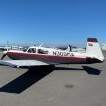BFR / Flight Training Plans / IPC workflow (+/- with advanced avionics)
-
Members Online
- DXB
- GoDemonDeacons
- Fritz1
- Oscar Avalle
- Planegary
- mike_elliott
- Jakes Simmons
- Ivan
- Crawfish
- 00-Negative
- LANCECASPER
- Zacckk
- PeterRus
- Guillaume
- Rick Junkin
- kortopates
- 47U
- TCC
- ad5ut
- rbmaze
- Skyland
- Justin Schmidt
- eman1200
- MarquezJC
- Tommooney
- vik
- The Other Red Baron
- Aerodon
- WilliamR
- Robert C.
- Sabremech
- AndreiC
- hubcap
- Jeff Dennerline
- Thedude
- hazek
- TGreen


Recommended Posts
Join the conversation
You can post now and register later. If you have an account, sign in now to post with your account.